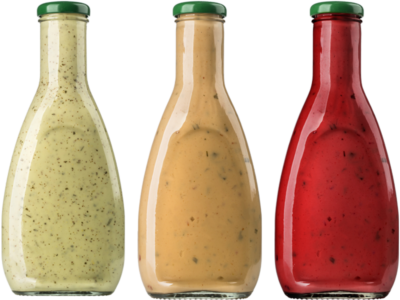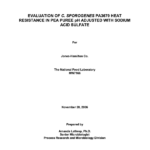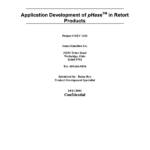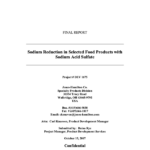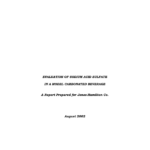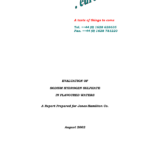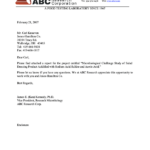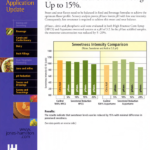pHase®
Food Grade Acidifier
Lower pH Without Generating a Sour Taste
pHase® is a dry granular acid that can be used as a food ingredient. It has the unique ability to lower pH at a low addition rate without generating a sour taste. Its clean acid taste has no fruity or vinegar quality, but gives a soft, round flavor on the palate, offering a more natural overall flavor characteristic with a bright, clean aftertaste.
Benefits
- Low cost/low addition rate. Acid strength is denoted by pKa value; the lower the pKa, the stronger the acid. pHase contains the strongest food grade acid which means less product is needed to attain a low pH.
- Low sour intensity. A Sensory Spectrum taste evaluation of pHase, citric acid and phosphoric acid showed pHase to have the lowest sour impact at pH levels of 3.0, 3.5, and 4.0.
- Reduction in sweetener usage. By lowering pH with low sour intensity, less sweetener is required (reduction of up to 15%) to maintain the same perceived sweetness.
- Reduction in the use of salt in prepared foods. pHase enhances the flavor of salt, allowing for sodium reduction of up to 40% with similar saltiness.
- Acrylamide reduction. Acrylamide is a carcinogen that naturally forms in the browned areas of starchy foods, such as corn chips and potato chips. pHase® reduces acrylamide formation by 60% with no adverse effects on taste or appearance.
- Product stability. A lower pH environment controls microbial populations thereby increasing stability.
- Reduction in cook/retort times. Thermal processing (retort, pasteurization) can change the flavor, texture, and color of food. Using pHase to reduce pH allows for processing at higher temperatures or shorter times without compromising microbial stability or flavor.
Ideal Uses
pHase complements the true flavor of vanilla, coffee, tea, chocolate and other brown flavors, and brings out the ripe, juicy notes of non-citrus flavors like peach. Food products that would be ideal for pHase use include:
- Salad dressing (blue cheese, ranch, buttermilk)
- Sauces (Teriyaki, Marinades, Alfredo)
- Soups
- Salsa
- Prepared Salads (Egg salad, Potato Salad, Macaroni Salad)
- Processed cheese sauces and spreads
- Reduced calorie Pancake syrup / Flavored Syrups (high water activity)
- Confectionary (Fillings and toppings such as doughnut fillings, pie fillings, toaster strudel)
- Beverages (Sports Drinks, Flavored Waters, Teas, Coffees, Bar Mixes, Alcohol Beverages, Beverage Concentrates)
Are allergens a consideration?
pHase contain no sulfites and should not produce allergic reactions.
Does pHase™ chelate?
pHase does not chelate metal ions, therefore it will not provide protection from metal catalyzed degenerative reactions. Formulations that require chelation will need a blend of organic acid or the addition of a chelating agent like EDTA.
Is pHase considered “natural”?
Yes. The Senior Director, Food Labeling and Standards Grocery Manufacturers Assn (GMA) 1350 I St NW, Suite 300 Washington, DC 20005 agrees with the rationale.
What are the labeling options?
Sodium Acid Sulfate
Sodium Bisulfate
Bisulfate of Soda
What are the physical and chemical characteristics of pHase?
pHase is a dry granular acid that easily dissolves in water. It is heat stable up to 800° F. Its chemical formula is NaHSO4. In water it dissociates into sodium, hydrogen and sulfate ions, all of which are beneficial in food systems. Sodium is a known flavor enhancer, hydrogen ion lowers pH, and sulfate has nutritional value.
What is the nutritional information?
Calories: 0/100g
Sodium: 19.9g /100g
Can pHase be used to reduce acrylamide formation in prepared foods?
Research shows that pHase offers a safe, cost effective method to reduce acrylamide levels in French fry products and snack chips by up to 60%. Bisulfate of soda reduces acrylamide formation by 60% with no adverse effects on taste or appearance. Acrylamide is formed via the Malliard reaction; Bisulfate of soda blocks the formation of acrylamide by lowering pH and protonating the amine group. Bisulfate of soda is unique among food acids because it lowers pH without imparting a sour taste. This allows acrylamide reduction without impacting the flavor of the final product. Bisulfate of soda was added to corn tortilla masa at 0.5%, which reduced the pH from 6.9 to 5.3. The tortilla chips were produced using standard operating procedures in a commercial operation. The acrylamide content was reduced from 514ppb for the control to 145ppb for the chips containing bisulfate of soda. A full sensory analysis showed that the reduced acrylamide chips maintained acceptable sensory characteristics.
Research
Please note that all sample requests are satisfied by TLC Ingredients.

